Bon appétit Ishikawa!/Sake Rice
Hyakumangoku-no-Shiro, a new original brewer’s rice from Ishikawa Prefecture, begins to shine in the production of sake with a light yet rich taste. 1
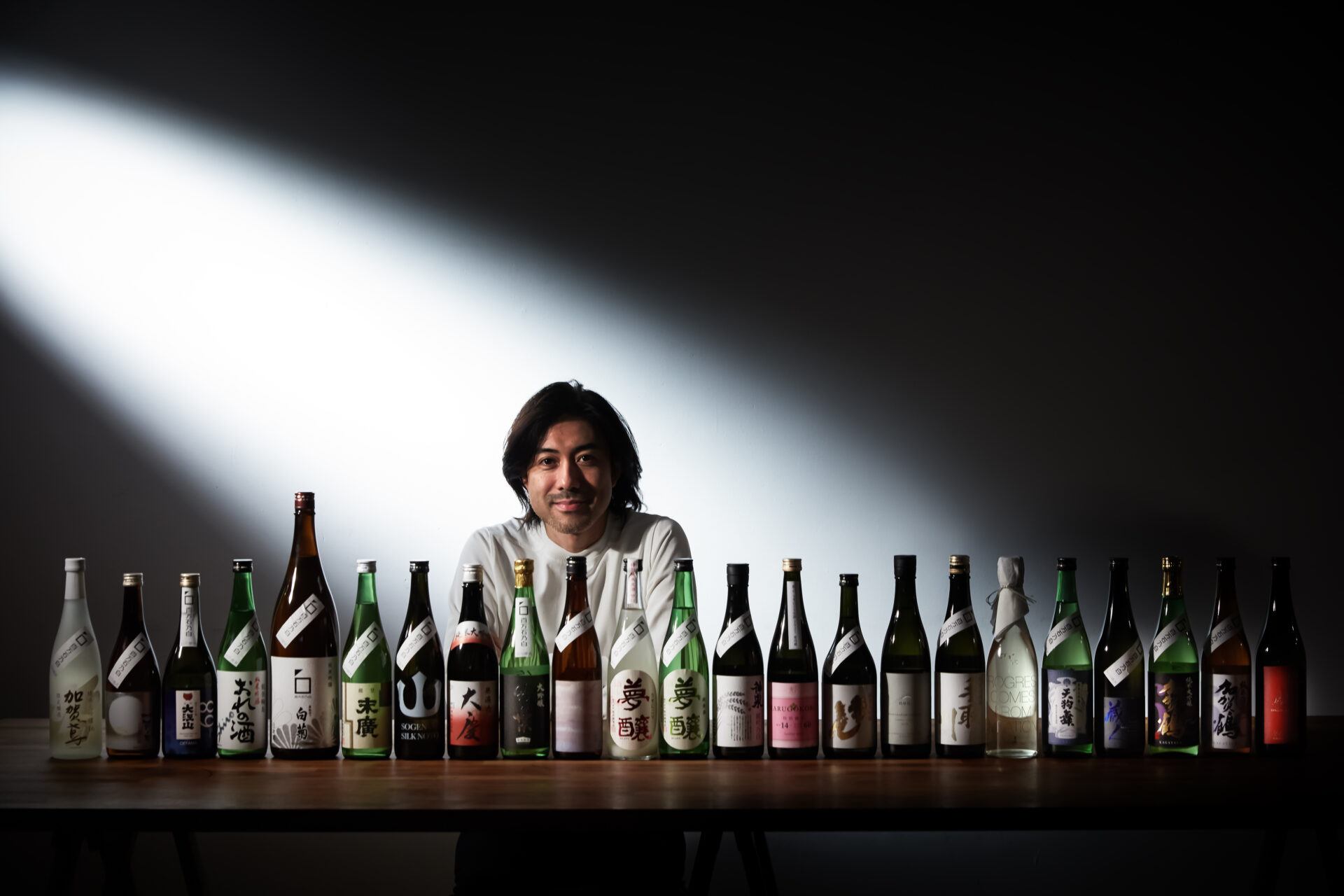
*The sake bottles/brands in the photo were acquired in February 2021.
Many unknown Japanese sake brands brewed from the new rice, Hyakumangoku-no-Shiro
At the peak of the year’s new sake brewing season in February, a number of sake bottles with a common feature were gathered together. All of them were produced by the sake brewers in Ishikawa Prefecture from the new brewing rice, Hyakumangoku-no-Shiro. The production of these brands went full scale in 2020, and they are not yet known to many people.
Motohiro Okoshi had a taste of all these sake. He studied wine brewing and worked as a chef-sommelier at a prestigious restaurant in France, and is one of the leading sommeliers in Japan. In addition to running the restaurant An Di, which serves modern Vietnamese cuisine and fine wines, he is also working as a supervisor and producer of restaurants and drink menus, and is developing new products. Well versed in Japanese sake as well, he also has experience as a judge at international Japanese sake competitions. He is a professional capable of analyzing alcoholic beverages from the various perspectives of producers, restaurant owners and customers.
“By tasting these 21 brands of sake together, I will be able to grasp the profile of this new brewer’s rice, Hyakumangoku-no-Shiro, which is still hidden in a veil,” said Mr. Okoshi with anticipation. For each sake, he carefully took a first sip, rinsed his mouth with water and then had a second sip, promptly taking notes on a PC. There were some instances when his eyes sparkled upon tasting a sake; after such moments, he continued tasting the sake particularly carefully.
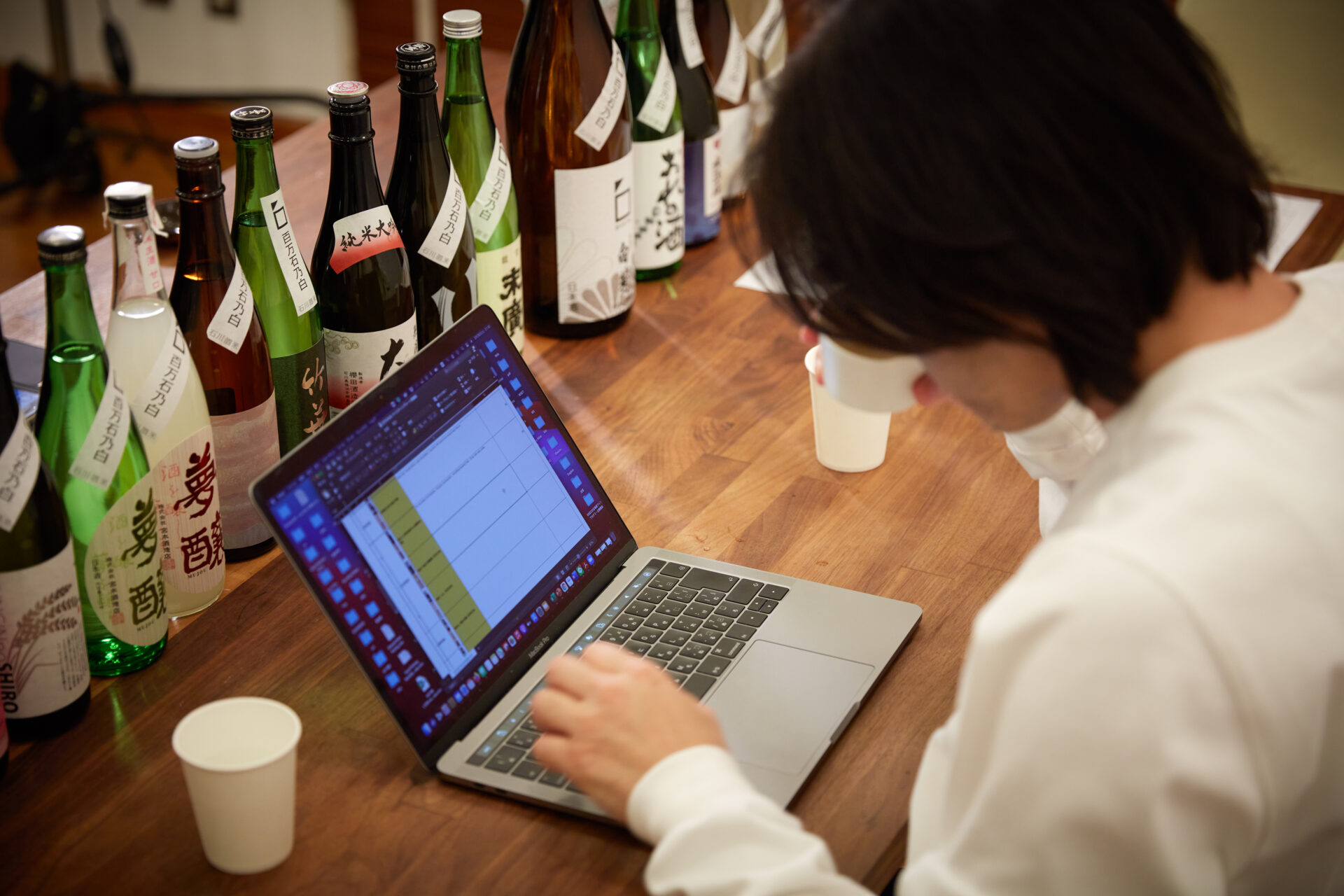
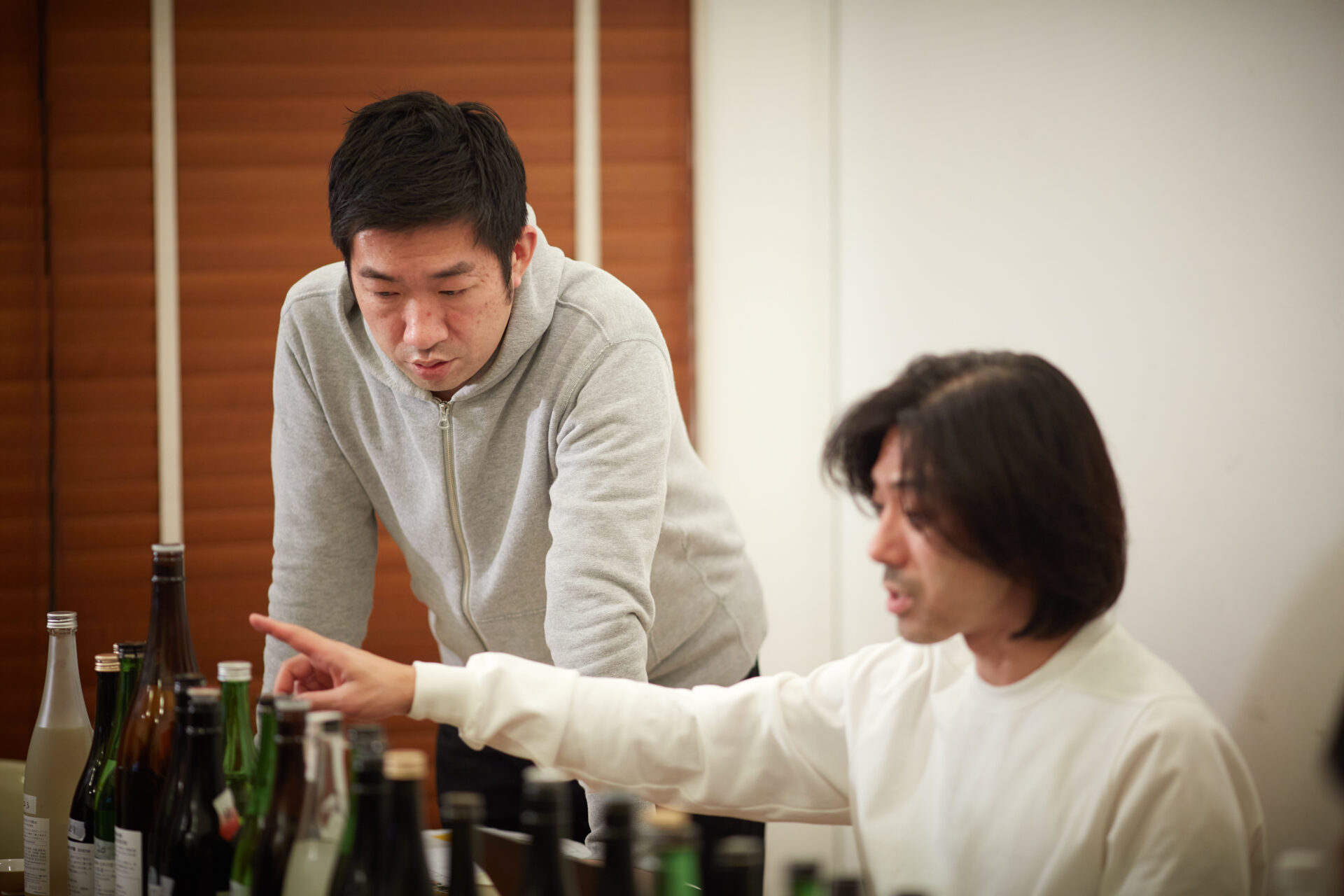
A lightness common to all the brands, and each with a brilliant characteristic.
After tasting, Mr. Okoshi began to tell his honest impressions. “As a whole, I have an impression that it is light from the mid-palate (taste in the middle that comes after the first taste) to aftertaste. Even the brands from a brewery that mainly produces sake with a rich umami taste had both umami and a light finishing taste. I had an impression that this is ‘light rice’ with a comfortable, airy feeling.”
One of the characteristics of Hyakumangoku-no-Shiro is that it contains less protein than other types of brewer’s rice. As a result, it contains less amino acid, which is the main cause of impurity in taste, thus making it easy to brew a clean sake with less impurity. Another characteristic is that it can be ground down to a high degree. It will not break even if the surface is ground down a lot, enabling the removal of the layer that contains a large amount of amino acid. Consequently, the amino acid decreases due to the synergy effect of these two characteristics, and it becomes easy to produce sake with a clean taste. Mr. Okoshi summarized the potential of Hyakumangoku-no-Shiro as follows:
“Hyakumangoku-no-Shiro produces a light taste and modest mid-palate due to its low protein content. If you try to produce too much umami taste, it will ruin the cleanness and the taste will become heavy. If the potential of Hyakumangoku-no-Shiro is fully utilized, the sake should taste light, yet contain a gentle umami taste and be well-balanced; it will leave a pleasant, clear aftertaste and possess overall harmony.”
The following are Mr. Okoshi’s comments regarding four of the brands:
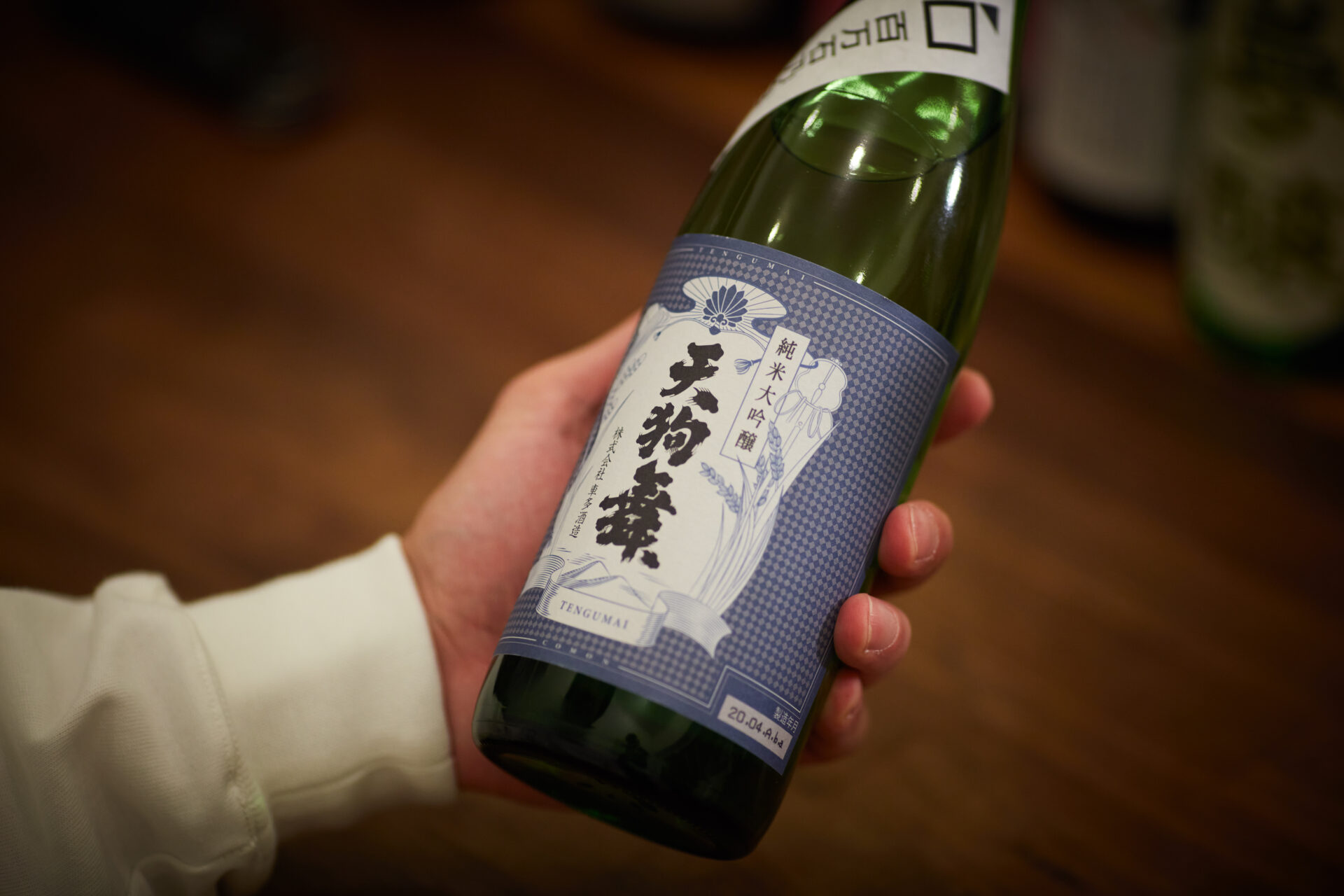
Rice polishing:50%
Alcohol content:15%
Syata Syuzou
“This brewer is known for being good at producing a mature taste from rice. This sake has a fresh, light taste, while retaining Tengumai sake’s characteristic of a rich aroma of caramel, cereal and ripe banana. Its umami taste and refreshingness are excellently balanced. In general, it is difficult to draw out an acetic taste in the case of Junmai daiginjo; however, this sake contains sourness which enhances its clean umami taste. It has combined Tengumai’s powerful taste and Hyakumangoku-no-Shiro’s delicate taste in a remarkable manner.”
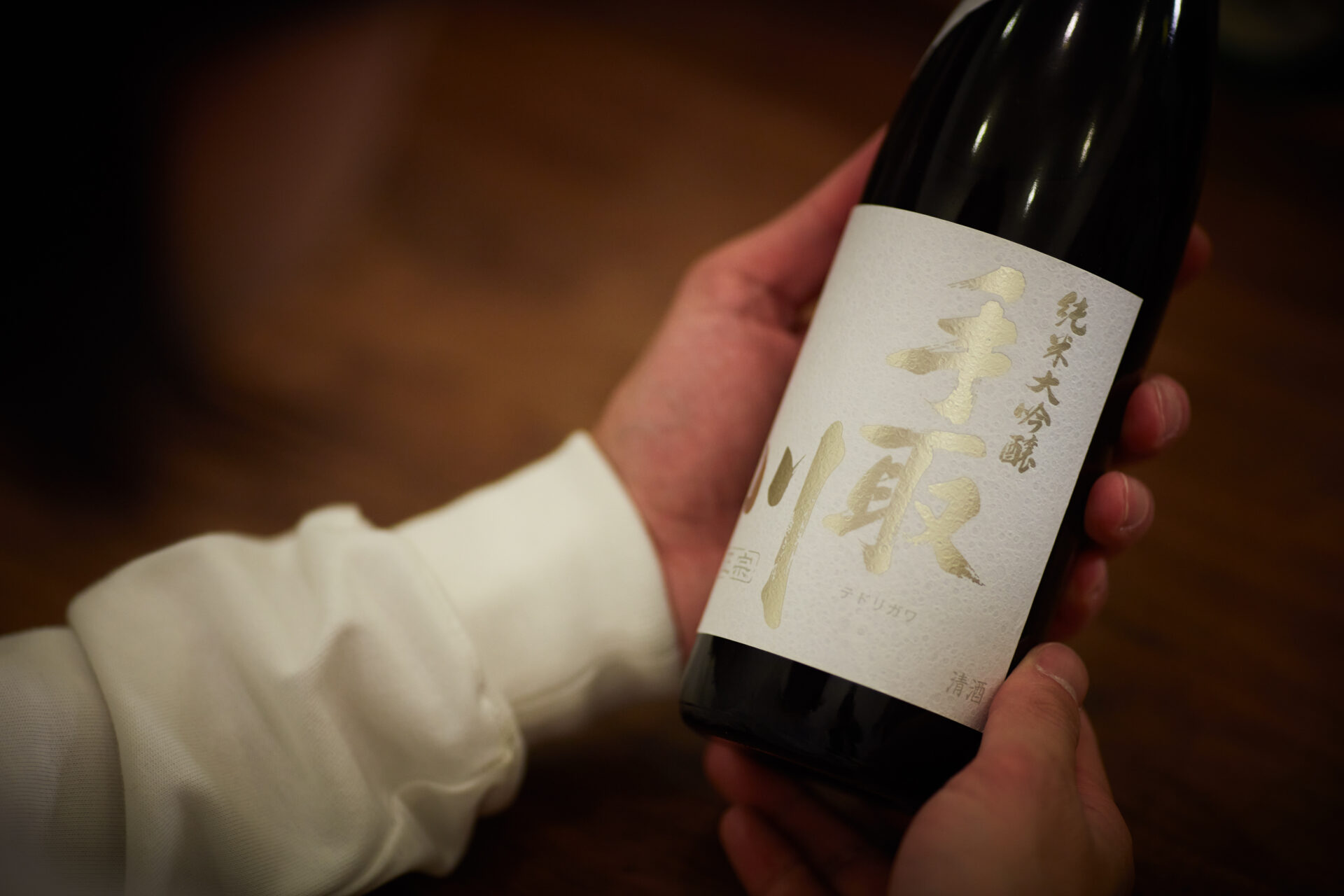
Rice polishing:50%
Alcohol content:15%
Yoshida Shuzoten
“The green apple aroma and slight strawberry aromas are impressive. The most excellent feature of Tedorigawa sake is that the aroma is well controlled to provide a balance with the taste. Sake with a green apple aroma tends to be rather sweet. In order to create a balance with the light taste of this rice, it is very important to control the aroma. This Tedorigawa sake suppresses the aroma exquisitely, retains lightness and even has a mineral nuance. The aroma, lightness and mineral nuance are well harmonized to produce a tight, pure and elegant structure.
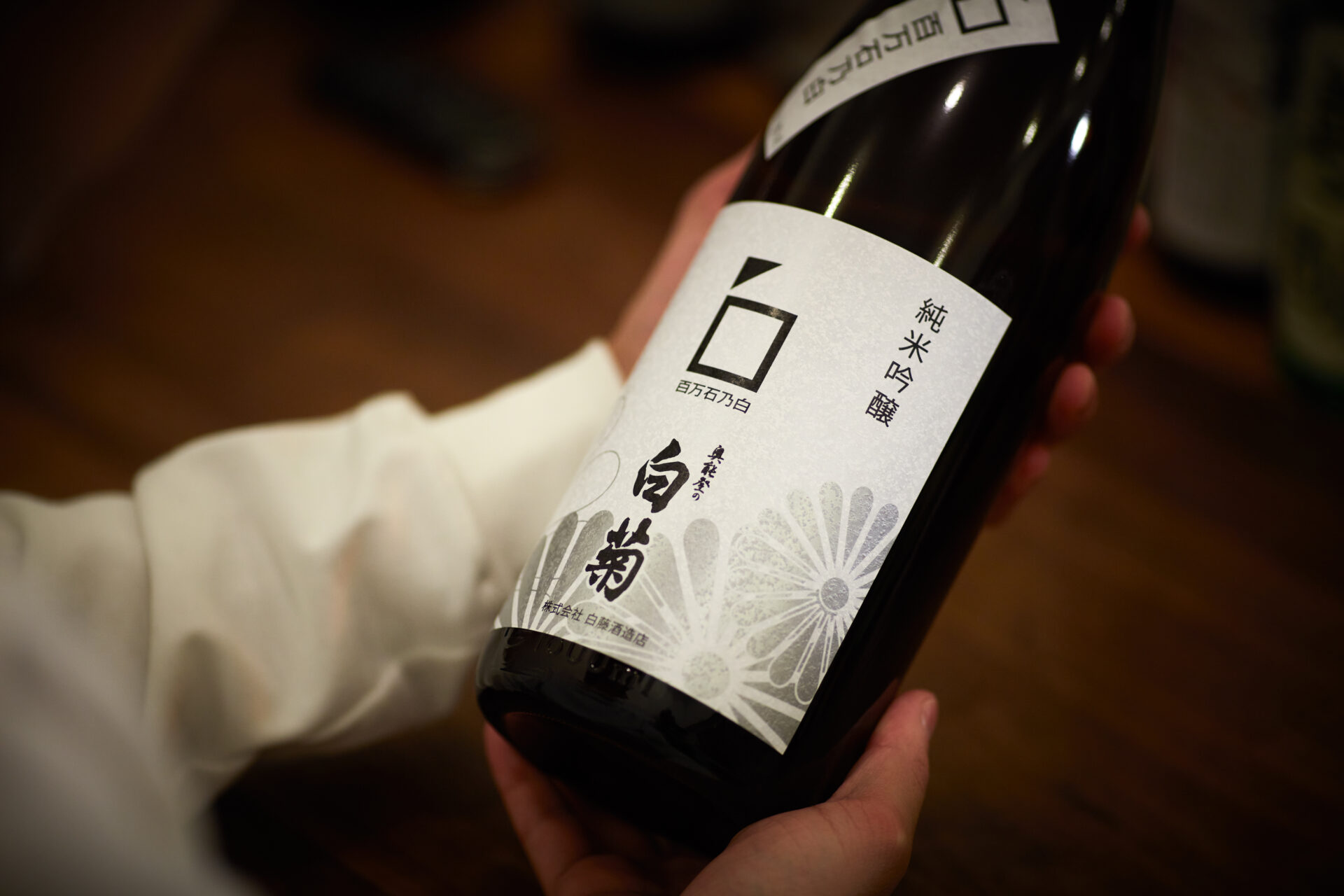
Rice polishing:55%
Alcohol content:15%
Hakuto Sake Brewery
“This sake is extremely mild, with the aromas of steamed rice and banana. It tastes soft at first, gentle and mild from the mid-palate to aftertaste, and ends in a light touch. In contrast to Tedorigawa, there is no clear taste structure, and the taste is wrapped in an airy, gentle atmosphere. This brewery might be best expressing the essence of Hyakumangoku-no-Shiro.
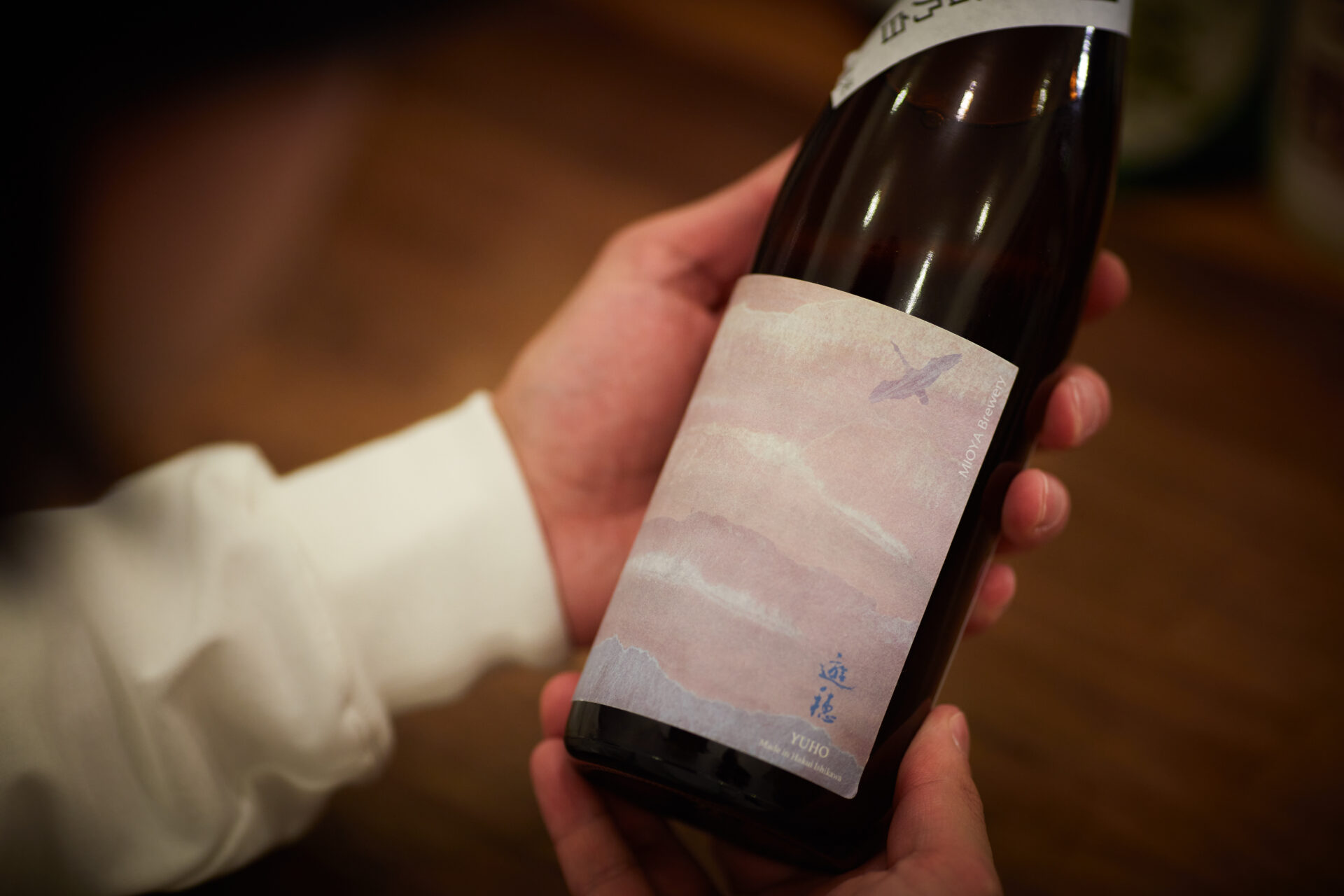
Rice polishing:68%
Alcohol content:14%
Mioya Brewery
“This sake is the most characteristic among these 21 brands. It contains the aromas of caramel, cereal, ripe banana and pain d'épice (rye bread with spice). It expresses a very strong umami taste and acetic taste. The two tastes stand out, yet they gradually disappear in the end. The Yuho brewery produces sophisticated sake with umami and acetic taste. There are other brands with stronger umami and acetic taste; however, the taste of this sake ends really lightly, which is a feature created by the Hyakumangoku-no-Shiro rice. The Yuho style, which is characterized by a strong, rich taste, is expressed lightly by Hyakumangoku-no-Shiro, creating a new appealing sake.”
Through tasting these sake brewed using Hyakumangoku-no-Shiro, Mr. Okoshi said he had once again realized that Japanese sake is an agricultural product.
“After tasting several brands of sake brewed using Hyakumangoku-no-Shiro, I realized a common characteristic due to the rice, which is hidden behind the characteristics of each brand. All the local breweries produced their own sake using Ishikawa’s original rice; therefore, they presented the taste of sake brewed from Ishikawa’s rice and water, by Ishikawa’s people. Originally, Japanese sake is a farming product produced from the land. I realized anew the joy of tasting the individual characteristics of each sake.”
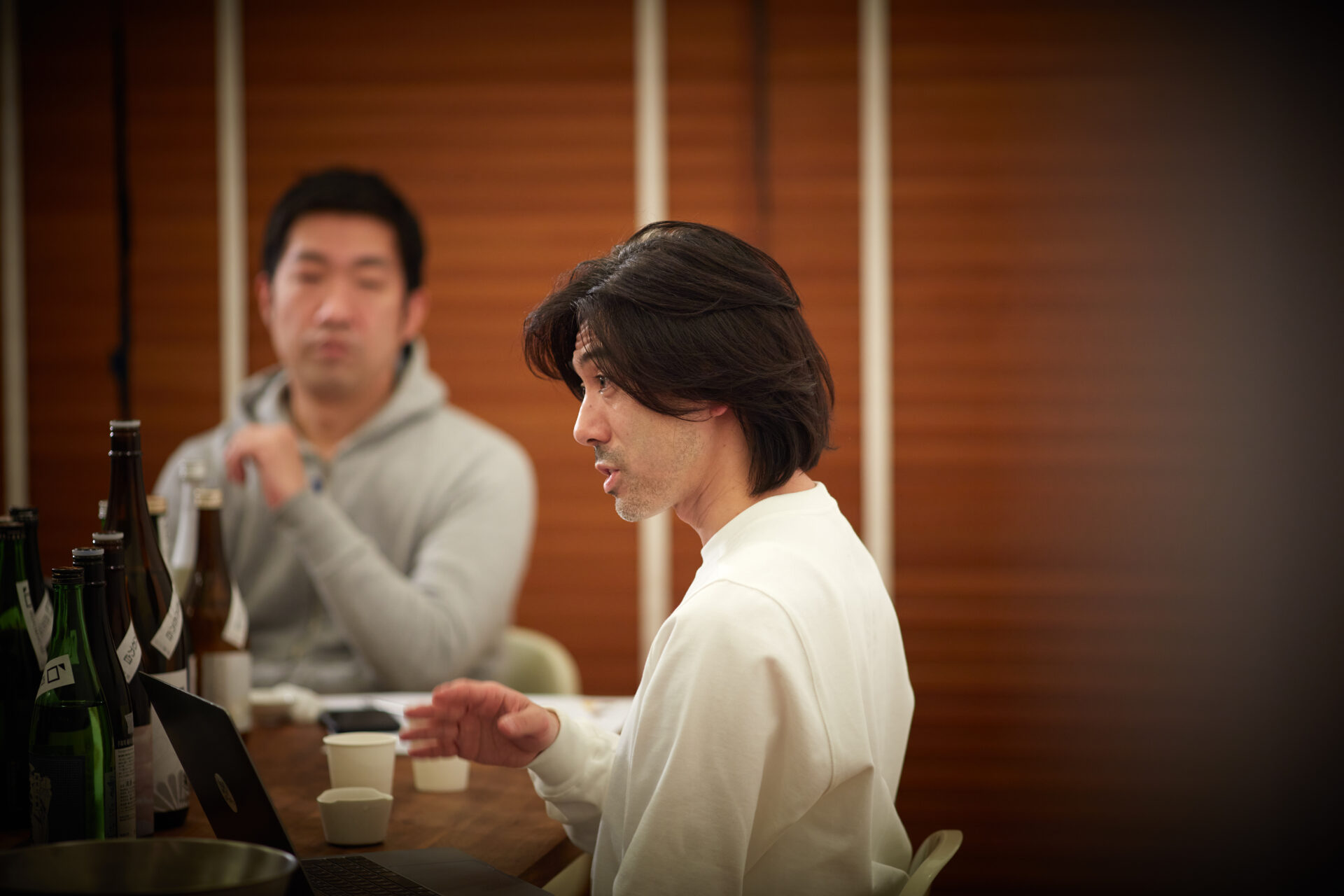
Profile
Motohiro Okoshi
Born in Hokkaido in 1976. Acquired a diploma from the International Sommelier Association (A.S.I.). After working in France, he worked as a sommelier at L’écrin in Ginza from 2001, and then learnt grape cultivation and wine brewing in France for three years from 2006. After returning to Japan, he became the chef-sommelier of L’écrin. Subsequently, he became an independent wine taster and director in 2013. In 2017, he opened the modern Vietnamese restaurant An Di. Visiting many countries, he currently conveys the essence of wine through consulting, lectures and writing. He is also well versed in Japanese sake and shochu, and noted for his excellent presentation of meals combined with wine and sake.
Photographs:SHINJO ARAI
Text:KOH WATANABE
(supported by Ishikawa Prefecture, Ishikawa agriculture total support organization)